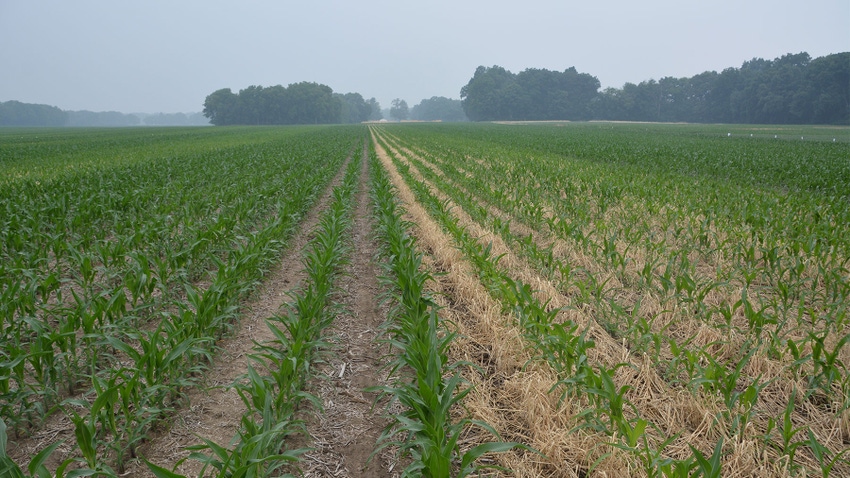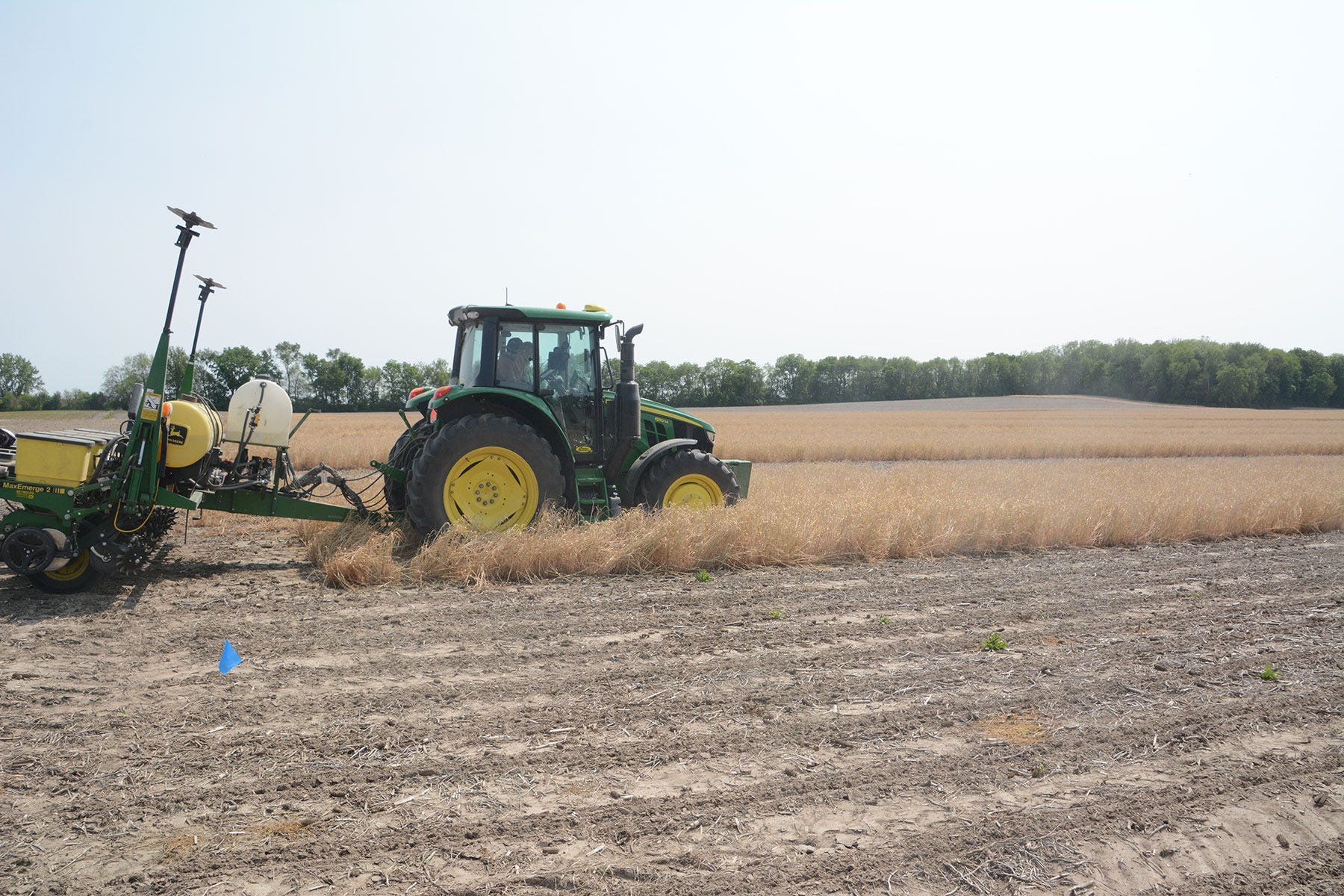
The word was spreading at field days and coffee shops during the last week of June in 2023. Corn planted after cover crops, particularly after cereal rye, appeared to be in trouble. Even if stands were adequate, corn was shorter, sometimes by quite a bit, and not as deep green. Some people were ready to pull the plug on cover crops for good.
That was June. By November, after harvest, a different story was circulating. Not only did many of those fields recover, but also in some cases, yields were outstanding. Of course, not everyone had comparisons between corn after cover crops and corn after no cover crops.
Dan Quinn did have such a comparison — in a replicated, field-scale trial at the Throckmorton-Purdue Agricultural Center near Romney, south of Lafayette, Ind.
“We did not see a big yield difference at TPAC with corn following the cover crop, even with the corn being behind earlier in the season,” says Quinn, Purdue Extension corn specialist. In fact, there was no significant difference in corn yield between corn no-tilled directly into soybean stubble and corn no-tilled into a terminated rye cover crop.
More moisture later
“This is something that we noticed in a few areas with cover crops and no-till last year,” Quinn says. “They often looked worse at the start but caught up later. They may have benefited from improved soil moisture later in the season than areas with less residue.”
In fact, better moisture protection later in the season during grain fill is Quinn’s best guess as to why the no-till and cover crop systems caught up for yield last year. Drought returned in many areas in mid-August and extended nearly into harvest. Moisture was at a premium to complete grain fill successfully.

MORE RESIDUE: Cereal rye was terminated before planting in this Purdue trial, but there was still lots of residue at planting time.
The study where Quinn could compare corn planted into cereal rye cover after termination with corn no-tilled directly into soybean stubble without a cover crop also compared two popular closing wheels with a standard rubber closing wheel.
“The main takeaway from this study is that the inclusion of closing wheels that are designed for high-residue systems can provide improved emergence and yield for corn following a rye cover crop,” Quinn says.
Therefore, he believes farmers who are in high-residue systems and currently only rely on standard, round, rubber closing wheels may need to look at trying new closing wheels and paying closer attention to planting conditions, planter settings and furrow closure in the spring.
About the Author(s)
You May Also Like




